29-31 October 2019, Cartagena
We are attending TOC Americas – if you would like to meet with us there to discuss your unique cargo challenges, get in touch at info@jadelogistics-asia.com
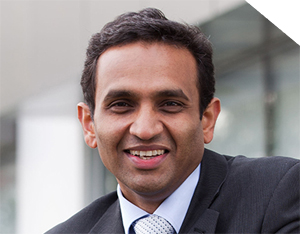
We are attending TOC Americas – if you would like to meet with us there to discuss your unique cargo challenges, get in touch at info@jadelogistics-asia.com
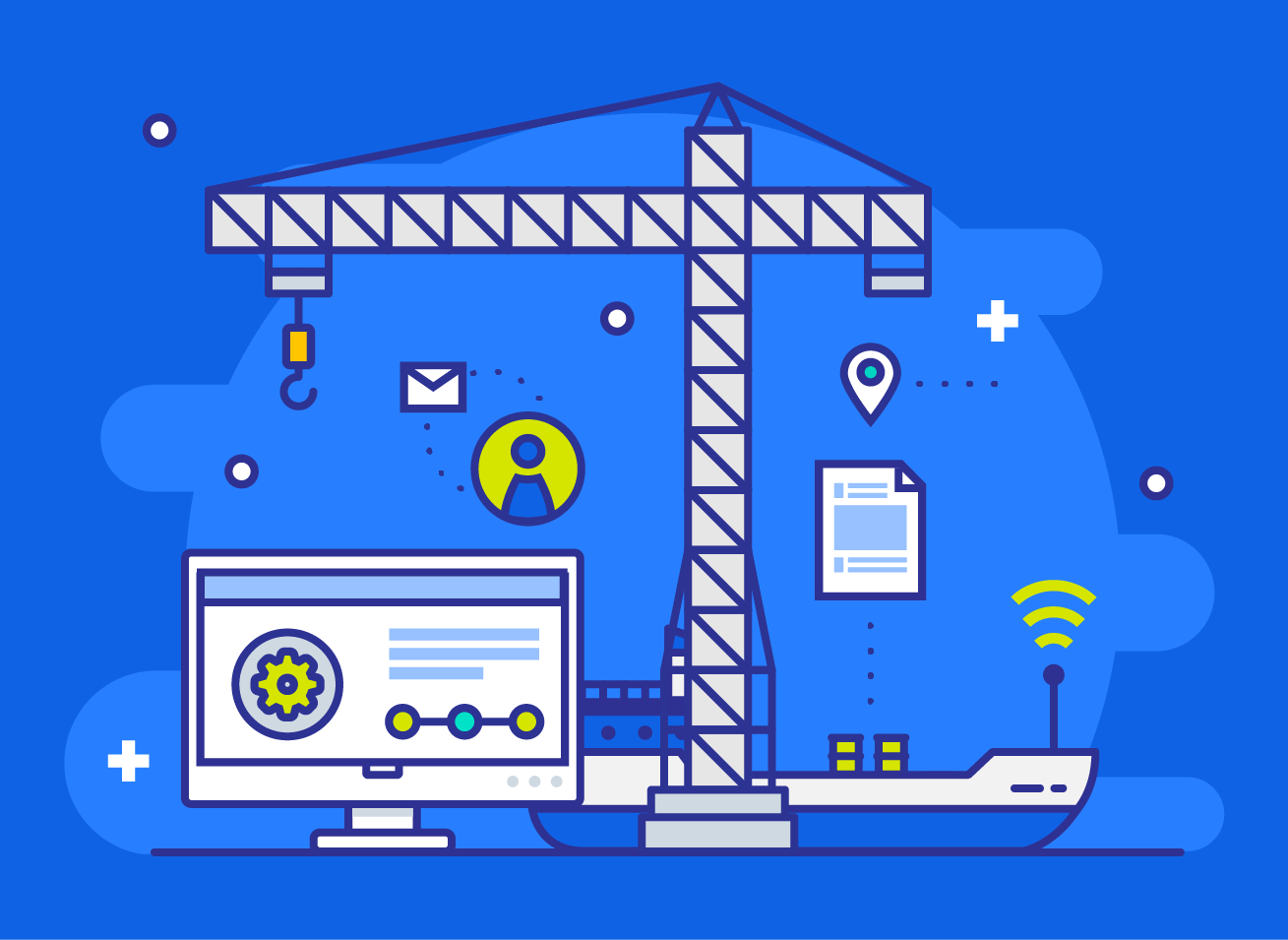
Digitalization is shaping the future of the transport and logistics industry and is forecast to change the game for mixed cargo ports. To survive, ports must take the first step on the digital ladder.
Technological innovation can help mixed cargo ports keep up with ever-increasing vessel sizes and cargo volumes, along with complex customer demands. But with so many options available, which is the right path to take?
In our latest eBook “Ensure your mixed cargo port’s digital future” we discuss how a TOS can help you work smarter and ensure your port’s survival by investing in digital transformation.
Download it here to learn more about:
Get in touch with us if you would like to know more about how our TOS, Master Terminal can help you get on the digital transformation path.
Invest in your port’s future – get port smart.


By Rebecca Rowley, Solutions Architect, Jade Logistics
With the constantly evolving landscape of terminal operating systems and their role within wider supply chain management, Jade Logistics has recently reviewed their API offering to ensure it continues to support easy and cost-effective integration with third party systems and excellent performance at scale.
The increase in demand for agile application development — providing applications which can be built quickly to explore new ideas, ways of working and growth opportunities — paves the way for an integration strategy that provides clear, concise APIs that require little system knowledge, have a low maintenance burden, are easily extendable and simple to interact with.
EDI continues to be a staple of the logistics industry and Master Terminal’s existing capabilities in this area are an important aspect of the TOS solution. As well as FTP drop and operator upload, the Master Terminal SOAP web service supports EDI data transfer via a SOAP interface and this existing web service will be maintained. This mechanism works well for this type of data transfer and is already a standalone web service endpoint which does not require frequent definition updates, and as such requires little support beyond the initial integration development.
An increasingly important area of data for port operators is real-time, event-driven updates. Jade Logistics will continue to use, and further enhance, the Event Stream framework for event driven data transfer direct from Master Terminal. As this data is driven from the existing SQL extract mappings, it is an ideal interface to provide information into a data warehouse for targeted, customer specific, BI analysis.
For data integration beyond the port environment and into the wider supply chain, Master Terminal integrates directly with CargoChain. This ensures information about cargo and its movements generated at the terminal is available to all supply chain participants, eliminating the need for complex point-to-point data sharing and providing one integrated view of cargo. Third-party applications can take advantage of this by using CargoChain to redefine the global information supply chain, safe in the knowledge that the relevant Master Terminal activity will be captured by CargoChain.
Master Terminal currently exposes a user interface SOAP web service, which will continue to be supported and used by both Jade Logistics applications and third parties. However, in the future new integrations will be supported by REST web services.
The Master Terminal REST API suite is designed with the single responsibility principle at its heart; specific interfaces are responsible for single functions, producing loosely-coupled modular systems with scope for extension without impacting existing services. This reduces the maintenance burden and provides an uninterrupted API service for third parties, removing barriers to upgrade.
The Master Terminal REST API suite supports both JSON and XML data output enabling easy integration. In keeping with the separation of concerns principle, only the object data relating to a specific interface is transferred. This reduces the size of data transmitted as well as providing a clear and concise interface. Where as the existing SOAP Web service data objects are tightly coupled to the Master Terminal implementation, this is decoupled in the REST APIs providing a user-friendly interface requiring less system knowledge to integrate.
At Jade Logistics, we appreciate that every port is unique, with different workflows and handling procedures. Customers with specific and unique integration requirements, for example to assist in implementing custom applications for terminal functions, will have a specific REST API developed to meet their needs. This can be used in conjunction with the Master Terminal REST APIs to provide the functional coverage required to build a bespoke application.
It is important to Jade Logistics that port operators can choose the third-party applications on the periphery of their TOS (such as an external VBS System) that work best for their business, while still being able to easily integrate these systems with Master Terminal. The Master Terminal REST API suite includes generic interfaces for commonly required functions. If additional feature support is required, an application specific interface can be developed with little overhead.
MASTER TERMINAL API OFFERING

WHY REST?
REST interfaces now represent more than 70% of public APIs. This popularity is because REST, with JSON data, is simpler to interact with and faster to integrate to. Highly extendable, flexible and fast, REST is ideal for APIs in today’s agile environment.
The size of a REST API call and data transmission is significantly smaller than a SOAP request. This improves performance and requires less bandwidth, reducing load on the system. REST calls are lightweight and simple, allowing easy, quick calls to a URL for fast return responses.
REST inherently supports a variety of data formats, but the predominant use of JSON means better support for browser clients. JSON data is easily serialized into application specific objects without the need for a full service definition and intermediary proxy classes. This greatly simplifies the development required to interact with the client interface as well as removing the need to update a previous definition when changes are made, providing backwards compatibility.
Because REST is stateless, the same request can be made multiple times with the same response. This is ideal for mobile applications, allowing the process to be retried without major interruption in case connectivity is lost, as well as supporting caching of the results.
With REST web services, the client and server are loosely coupled. This means the server (i.e. the web service provider) can extend or modify the exposed interfaces without impacting the client (i.e. the application calling the web service). This is in stark contrast with SOAP web services, where the published API (web service definition) must be kept in sync and any changes must be made by both the client and server at the same time. This is a significant barrier to continuing enhancements and agile development.
If you would like to learn more about our TOS, Master Terminal, please contact us.

All ports face a digital transformation. It’s not a matter of if, but when. The maritime ecosystem is growing, players are changing, cargo volumes are increasing and customers are demanding better service and efficiency. The only way for ports to survive this transforming environment is to grow along with it. The greatest influencer of this transformation is technology, so it’s not surprising that the number one prediction for the shipping supply chain in 2019 is more budget allocated to IT spend, according to the Navis Business Bellwether Report[1]. Much of that budget is expected to be targeted at new technologies to improve operational performance.
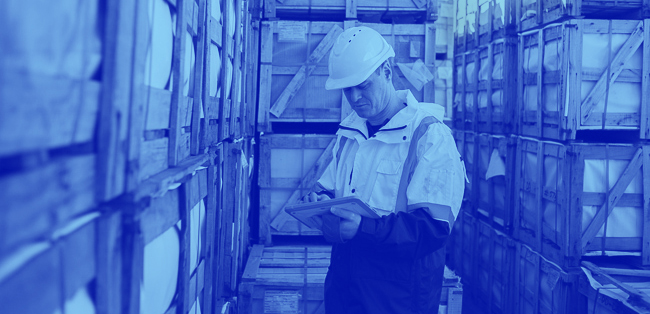
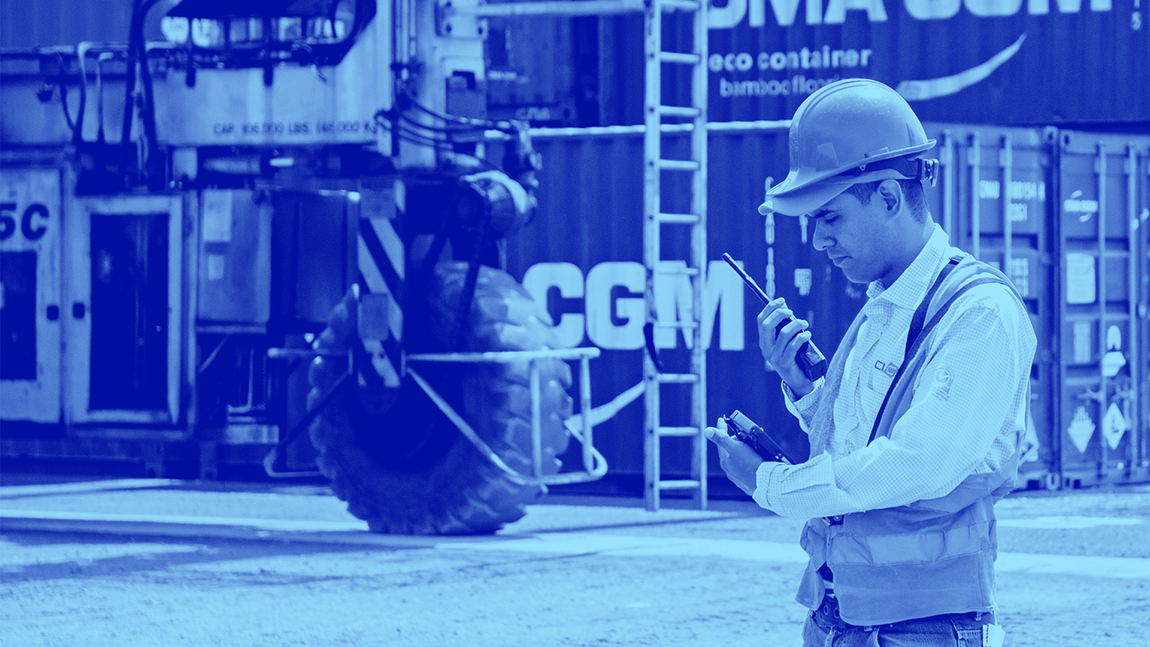
Traditionally a conservative bunch, Port Operators can’t argue the deafening demand for improved operations. Marco Neelsen, chief executive of Malaysia’s Port of Tanjung Pelepas (PTP) said at TOC Asia 2018: “It’s about how efficient you are, how quickly and how cost efficiently you can move the container from A to B.” [2]Ports that are brave enough to explore this digital world further, will benefit enormously, with even the smallest of steps forward.
A key part of the digital transformation driving smarter ports are mobile applications, or browser–based web apps, that complement your terminal operating system (TOS). These apps offer a user–friendly way to improve logistics management and cargo activities in real time, putting the power of information at your fingertips.
At Jade Logistics, we understand the importance of ensuring that technology is not a distraction, but a tool that allows users to be more efficient and ports to deliver better service to their customers. Our TOS, Master Terminal, is complemented by a Web Apps Suite that has been designed to make mobilizing your workforce a cost-effective solution that delivers real productivity and efficiency gains across your operation. These web apps support a ports’ deployment of TOS functionality at different levels and roles on the terminal, as well as providing choice with respect to compatible hardware devices. Automatic updates for the apps are provided in each release of Master Terminal and occur at the server level, eliminating the need for disruptive software upgrades and ensuring effortless maintenance.
Master Terminal’s comprehensive Web Apps Suite enable you to make informed business decisions using real-time data so that you can work smarter, not harder.
WEB PORTAL
Master Terminal Web Portal provides transparency of information to the wider supply chain, freeing up port staff to focus on core operational tasks. Offer your customers (including truckers, consignors, consignees, shipping companies, customs and government officials) access to selected Master Terminal functionality via a web browser. Empower your customers by providing access to real-time information about the status of their cargo and other relevant services.
VEHICLE BOOKING SYSTEM
Master Terminal’s Vehicle Booking System (VBS) allows you to easily manage the flow of vehicles throughout your gate operations. The VBS allows you to control vehicle arrival times to match your terminal’s work schedule, ensuring less downtime and congestion at the terminal gate. Schedule when transport operator vehicles can visit your terminal to evenly distribute the flow of vehicles throughout the hours of operation, and make better use of cargo handling machinery on the port.
VEHICLE APP
Increase driver productivity with the Master Terminal Vehicle app. Our vehicle app was designed with your drivers in mind, ensuring those at the coalface of the port are provided with real-time information that allows them to seamlessly perform their work. Featuring an intuitive and easy to navigate interface with large buttons, the vehicle app is user-friendly and quick to learn, regardless of the user’s technical ability.
HANDHELD APPS
Extend your TOS functionality with Master Terminal’s cost-effective Handheld apps. There is an ever increasing need for real-time information and fulfilment. For terminal operators this means operating as efficiently as possible and optimizing turnaround times. Master Terminal’s suite of handheld apps allow you to make informed business decisions with accurate up-to-the-minute information, provide real-time monitoring and reporting, reduced human error, and ultimately offer better customer service.
TALLYMAN
Master Terminal Tallyman accurately captures final cargo stowage on a vessel in real time, online and offline. Working with Roll-On/Roll-Off (RORO) and Lift-On/Lift-Off (LOLO) planning in Jade Logistics’ Master Terminal, Tallyman operates on modern devices (optimized for screens greater than 7”) and web browsers. Even when working out of range of your terminal network (e.g. the hold of a ship), Tallyman’s offline store and forward capability ensures all data is captured and recorded. Tallyman assists in creating a more complete picture of cargo transactions, enabling ports to operate more efficiently.
Ensure you are port smart with web apps that can help you reduce delays and cost, while increasing throughput and efficiencies. A digital transformation can help you better manage your resources and ensure you remain competitive. Secure and embrace your smarter future!
If you would like to learn more about our Web Apps Suite and how Master Terminal can help you get port smart, please contact us.
—–
[1] Navis Business Bellwether Report (Download BPI Network Study). (2018, November). Retrieved February 22, 2019, from http://www.bpinetwork.org/thought-leadership/studies/69
[2] Neelsen, M. (2018, June 7). Port Strategy | Digitalisation more important than automation. Retrieved February 22, 2019, from https://www.portstrategy.com/news101/port-operations/planning-and-design/digitalisation-more-important-than-automation
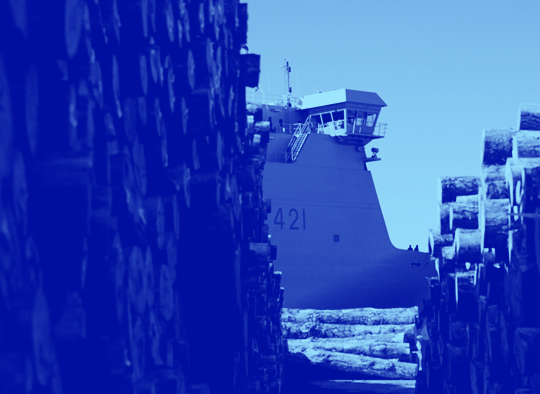
Jade Logistics’ Kaustubh Dalvi talks to Port Strategy about the importance of finding a TOS that suits the business requirements, and how the TOS is the core of a port’s operation from which they can provide enhanced levels of efficiency to all stakeholders across their port community.
Smaller Terminal Operating System (TOS) solutions have plenty to offer without the high costs of the big players, says Martin Rushmere.
Adaptability and flexibility plus cost savings are expected today from terminal operating systems. Customers are looking beyond the original wonders that dazzled ports, IT and computing power, to applying the same programme and platform across different cargoes and terminals. Yet a perception still lingers that the software and equipment needed (especially dedicated on-site servers) means a costly and complicated package.
Richard Willis, port operations technical director of Royal HaskoningDHV, puts it this way. “Well-established vendors have a deep range of product functionality, tailored over many years to their clients’ needs, gradually standardising process and creating standard working practices.” He cautions that the installation of a new system “always needs some degree of business change from a non-systemised operation to manage cargo flows and when adopting a well-established TOS the terminal client is recommended to align their practices with the standard product features, to capture the benefits of using the toolkit features. “This is often a sensible approach” says Mr Willis, “but some terminals who have more specialised local needs or variations may benefit from using a TOS company that can be more flexible and engage in product customisations to shape around the client requirements.”
Miami-based Cetus Labs, which has a total of just nine people, is one such TOS provider that bears this in mind, through its Octopi platform. Catering to mixed ports and container terminals of less than 500,000 TEU a year, the system is linked through Amazon Web Services. “Every feature is in the Cloud,” says Miles Varghese, head of sales, “which gives tremendous flexibility, speed of implementation and low cost of installation. Implementation takes four to six months.”
The company sees itself as “the Gmail of TOS”. One of the strategic priorities is to tailor the system to what the customer wants. “We innovate the data to what the customer wants and do not try to convince the terminal operator to buy a readymade product. “We guarantee 99.9% of uptime,” adds Mr Varghese, “and have a huge advantage in being totally based on the Cloud. Caribbean Port Services in Haiti is a customer and Octopi kept working even when that terrible Hurricane Matthew devastated the island.”
Cetus has an iron rule of installing and providing a feature specially requested by a customer only if it can be used by all customers. “We will be up front and we are not going to build something that is not scalable,” says Mr Varghese, “and if it is scalable, we will often install it for free.” Maintenance and repair features have been added, which Cetus says are usually outside the scope of products from large providers, and berthing areas usage/analysis functions have been developed in response to customer needs.
CHALLENGING THE STATUS QUO
Mr Willis sees the marketplace dominated by a few leading companies, but smaller and start-up companies like Cetus are challenging around the periphery, specialising in particular regions or in certain cargo operations, and these companies “cater for those terminals that don’t fit the standard or want to take a more ambitious route to differentiate from local competition perhaps”.
Smaller terminals (arbitrarily 500,000 TEU and less) tend to do a mixture of cargo types and need a TOS that is designed to both manage the cargo variety properly and to equip the terminal with the ability to show greater flexibility to their customers.
“The reality in the market is that although some suppliers may cover the complete range, the buyer should look carefully at the nature of their customers when making a buying decision because each occupies a segment in which they are naturally much better,” says Allan Jones of International Terminal Solutions (ITS). “There are systems that do a better job for the requirements of the smaller terminal,” he adds. “Look for open TOS systems that can communicate with other systems; the TOS is an element of your automation, business intelligence and Internet of Things strategy and will need to work in synergy with specialist systems in this area.”
New Zealand-based Jade sees the TOS as the core of a port’s operation, and the platform from which a port can provide enhanced levels of efficiency to all stakeholders across their port community. President of global sales, Kaustubh Dalvi, notes that from its beginnings in the early 1990s, Jade’s Master Terminal “was designed as a turn-key solution for a marine terminal operator to handle multiple cargo types and have 24/7 support”.
TECH QUESTIONS
All vendors agree that it’s essential to stay abreast of the latest technology, but they disagree on which aspects to concentrate on. Blockchain is possibly the area of most uncertainty.
“We tell clients not to take blockchain too seriously”, says Cetus’ Mr Varghese. “The main focus is to get rid of pen and paper and move to digital methods.”
Jade takes a different view. “Platforms such as this will play a key role in the future of collaboration and sharing of information among supply chain actors. While blockchain is still in its infancy with respect to its place in the global supply chain, Master Terminal already integrates with the CargoChain information sharing platform which utilises blockchain as a means of proofing that all information stored is accurate and unaltered.”
Royal HaskoningDHV’s Mr Willis says the future of technology in terminals will be influenced by pressures from outside the terminal too, with environmental impact and closer supply chain collaboration being important. “Technology, particularly around process automation, machine-led decision making and remote-control equipment, is leading the way, with other cargo terminals learning from this sector and implementing their own solutions tailored to different cargo types. “However,” says Mr Willis, “within bulks particularly, automated operations have been well-established for many years, using equipment control in unmanned operations, with sophisticated stock management and sensor usage.” He sees huge potential from smart ports initiatives for Royal HaskoningDHV’s clients, from data capture and predictive analysis, innovative decision-making support and driving forward a lower-cost, lower-impact operation with the use of technology tools right across the port.
ITS’ Mr Jones believes that a key criterion should be how well the TOS can talk to other systems. “These terms are traditionally associated with larger terminals, but now all have their place in smaller terminals.” He points to the big advances in data availability – even in relatively small operations – and this is only set to increase with IoT. “As an example,” he says, “we have just completed implementation of our PortSpective system in a 250,000 TEU terminal. The system uses our IoT platform on the cargo handling equipment to track it in real-time to provide visualisations of the state of the operation, identify and highlight operational, engineering and safety issues instantly as they occur, and provide very detailed real-time data for both operations and engineering business analysis.”
For Cetus, a principal business approach is to deal with clients that Mr Varghese terms “forward thinking, who can see five to 10 years ahead. We are not comfortable with the ‘if it isn’t broken, don’t fix it’ philosophy.”
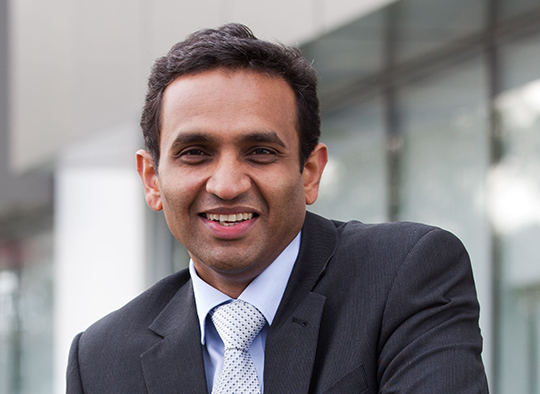
Jade Logistics’ Kaustubh Dalvi talks to Port Strategy about the importance of finding a TOS that suits the business requirements.

Container Management talks to Jade Logistics’ Kaustubh Dalvi about the importance of adaptability in ensuring the successful implementation of new terminal operating systems.

Container Management talks to Jade Logistics’ Kaustubh Dalvi about the importance of adaptability in ensuring the successful implementation of new terminal operating systems.
“An in-house terminal operating system (TOS) offers its user full control of both the technical and financial aspects of its operations but, to quote the late Stan Lee, “With great power comes great responsibility.””

Speaking with Container Management, along with T.J. Rucker, President of Tideworks, Mehmet Ali Kayaoglu, CEO of GullsEye and Scott Peoples of Navis, Captain Kaustubh Dalvi (pictured above) emphasized the importance of a robust implementation methodology in a successful implementation. He also offers his opinion on the move towards digitalisation in the maritime industry and the value in sharing data.
Read excerpts below or view the full article.
“Another company that relies heavily on planning to guarantee a successful go-live is New Zealand-based third party vendor Jade Logistics Group, which follows a robust methodology when it implements its own TOS at a new site. First, it begins with the project analysis, then it configures the inside of the system and finally it migrates the data and initiates a go-live. Kaustubh Dalvi, the company’s President of Global Sales, said that it focuses a lot on the planning analysis phase to give users as much visibility as possible on what is going to happen. The company also aims to collaborate on a day-to-day basis to ensure that the go-live remains on track.
MOVE TOWARDS DIGITALISATION
“Recently, a tsunami of digitalisation has hit the market, with blockchain initiatives and artificial intelligence (AI) developments aplenty.
“With all this new technology making waves in the industry, it may be high time that the maritime sector learned to share. Other industries happily share and sometimes even trade data to help fuel innovation, yet companies in the maritime industry have yet to latch onto this way of thinking. Dalvi explained that all this new technology is useless without data and, in order to be successful, data sharing is the key. He told CM: “It’s like buying a Ferrari, keeping it in the garage and not using it.” Dalvi believes that the more data is shared, the more valuable it becomes.
“Jade Logistics as a whole is very keen on data sharing, and in December 2018 it launched CargoChain, its own information sharing platform for the global supply chain. According to CargoChain CEO David Lindsay: “Today’s consumers are demanding trust while those involved in the supply chain require full transparency and visibility.” The platform aims to provide this by integrating blockchain technology and sharing trusted information amongst all actors in the supply chain. CargoChain targets issues of data sharing across the global supply chain and, by providing its platform to application developer communities, aspires to “allow developers to solve the world’s supply
“Dalvi has started to see data sharing happen within the maritime sector and hopes that it will become a much bigger thing in the future. To further encourage the flow of data, he suggested that some of the larger players in the supply chain should start practising what he called “data philanthropy”. This involves companies giving away data for experimentation and innovation, but it is something that is not seen currently in the industry. Still, Dalvi hopes that this will change, as he believes that people have begun to learn and to see the value of sharing data.”
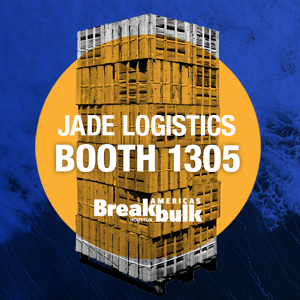
Breakbulk Americas 2018 is a fantastic event for the logistics industry, bringing together shippers and suppliers from around the world.
Jade Logistics are exhibiting at Breakbulk Americas from 2-4 October, 2018, in at the George Brown Convention Centre in Houston, Texas, USA.
You’ll find us at booth 1305, so make sure you stop by to meet the team and see the world’s leading terminal operating system—Master Terminal—for mixed cargo ports, in action. Discover how Master Terminal helps ports and terminal operators around the world manage their mixed cargo requirements, the easy way.
If you want to make sure you don’t miss a Master Terminal demonstration, please schedule a time with us here.
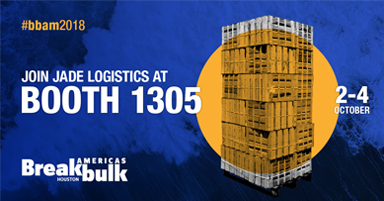
We look forward to seeing you there!
Kaustubh Dalvi, Keith McSwain and Jay Kronberg